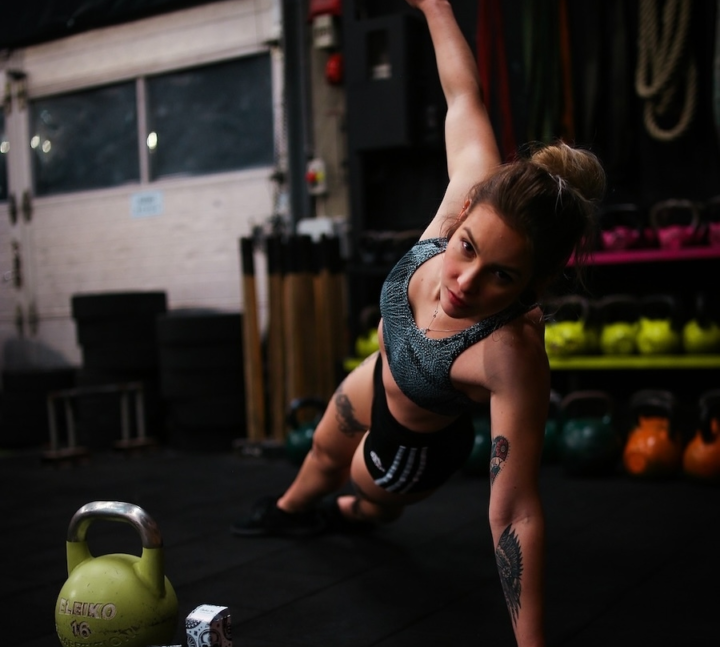Exercise
Lying Leg Raise
How to Perform - Lying Leg Raise
- Lie flat on your back on a mat with your legs fully extended and your arms placed palm-down alongside your body for stability.
- Press your lower back firmly into the mat by engaging your core muscles and slightly tilting your pelvis.
- Inhale and prepare by drawing your navel toward your spine to maintain a neutral spine position throughout the movement.
- Keeping your legs straight and together, exhale as you slowly raise them upward until they form approximately a 90-degree angle with your torso.
- Maintain tension in your abdominals at the top position while ensuring your lower back remains in contact with the floor.
- Inhale as you slowly lower your legs back down toward the floor with control, maintaining core engagement throughout the descent.
- Stop just before your heels touch the ground to maintain tension in your abdominal muscles.
- Complete your repetitions with a consistent tempo, avoiding momentum or swinging motions.
Important information
- If you feel strain in your lower back, bend your knees slightly during the movement or place your hands under your glutes for additional support.
- Focus on using your abdominal muscles rather than your hip flexors by keeping your lower back pressed into the mat throughout the exercise.
- Adjust the difficulty by modifying the leg position—bend your knees for an easier version or add ankle weights for more resistance.
- Keep your head and shoulders relaxed on the mat to avoid neck strain; never pull on your head to assist the movement.
Primary Muscles
Muscle Groups
Mechanic
Built for progress
Take the guesswork out of training
Create personalized AI-powered workout plans that evolve with you. Train smarter, track every rep and keep moving forward, one workout at a time.






The Lying Leg Raise stands as a formidable core-strengthening exercise that primarily targets the lower abdominal region while engaging the entire core musculature. This intermediate-level movement has earned its place in various training protocols from high-intensity interval training (HIIT) circuits to traditional bodybuilding programs and even recovery sessions. What makes this exercise particularly valuable is its versatility and effectiveness without requiring specialized equipment.
When properly executed, the Lying Leg Raise activates multiple muscle groups simultaneously, with the rectus abdominis (the "six-pack" muscle) doing the heavy lifting while the hip flexors, obliques, and lower back muscles provide crucial support. This synergistic muscle recruitment creates a comprehensive core challenge that builds functional strength applicable to everyday movements and athletic performance alike.
For those pursuing aesthetic goals, the Lying Leg Raise offers significant benefits by targeting the stubborn lower abdominal area that many find difficult to develop. The exercise creates time under tension in precisely the region where many people struggle to see definition, making it a staple in bodybuilding routines focused on balanced physique development. The controlled nature of the movement allows for precise muscle engagement without excessive strain on the lower back when proper form is maintained.
Beyond muscle building, this exercise serves functional purposes in HIIT workouts by elevating heart rate while building core stability, and in recovery protocols by strengthening the muscles that support proper posture and spinal alignment. The adaptability of the Lying Leg Raise makes it suitable for progressive overload strategies – as core strength improves, practitioners can incorporate variations to continue challenging the muscles and preventing plateaus.
Whether your fitness goals center on performance enhancement, physique development, or injury prevention, the Lying Leg Raise delivers remarkable benefits with minimal equipment requirements, earning its reputation as one of the most efficient core exercises available in the fitness toolkit.
FAQ - Lying Leg Raise
Lying Leg Raises primarily target the lower portion of the rectus abdominis (lower abs), while also engaging the hip flexors, obliques, and lower back muscles as stabilizers. This comprehensive activation makes it particularly effective for developing the stubborn lower abdominal region that many find difficult to define.
Beginners can bend their knees slightly to reduce the lever length and workout intensity. You can also perform fewer repetitions, limit the range of motion by not lowering your legs completely to the floor, or place your hands under your lower back for additional support during the movement.
The most common mistakes include allowing your lower back to arch off the floor (which can cause strain), using momentum instead of controlled movements, and lowering the legs too quickly. Keep your lower back pressed firmly against the floor throughout the exercise and focus on using your abdominal muscles, not your hip flexors, to lift your legs.
You can safely perform Lying Leg Raises 2-3 times per week with 48 hours between sessions to allow for muscle recovery. Incorporate them into your core or full-body workouts with 2-3 sets of 10-15 repetitions, adjusting the volume based on your fitness level and recovery capacity.
To increase difficulty, try adding ankle weights, holding a dumbbell between your feet, slowing down the tempo (especially during the lowering phase), or progressing to more advanced variations like weighted leg raises or hanging leg raises once you've mastered the basic movement pattern.







